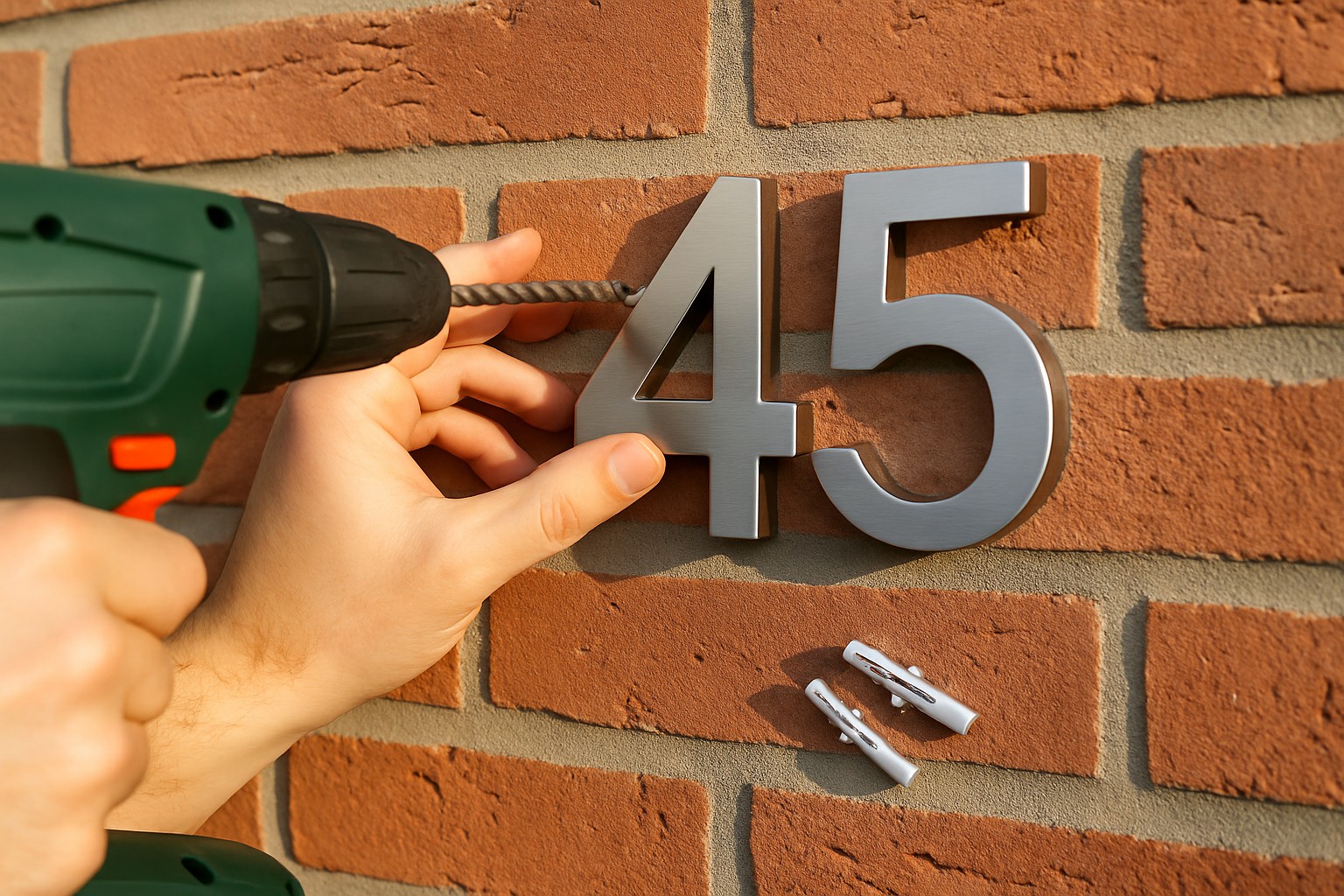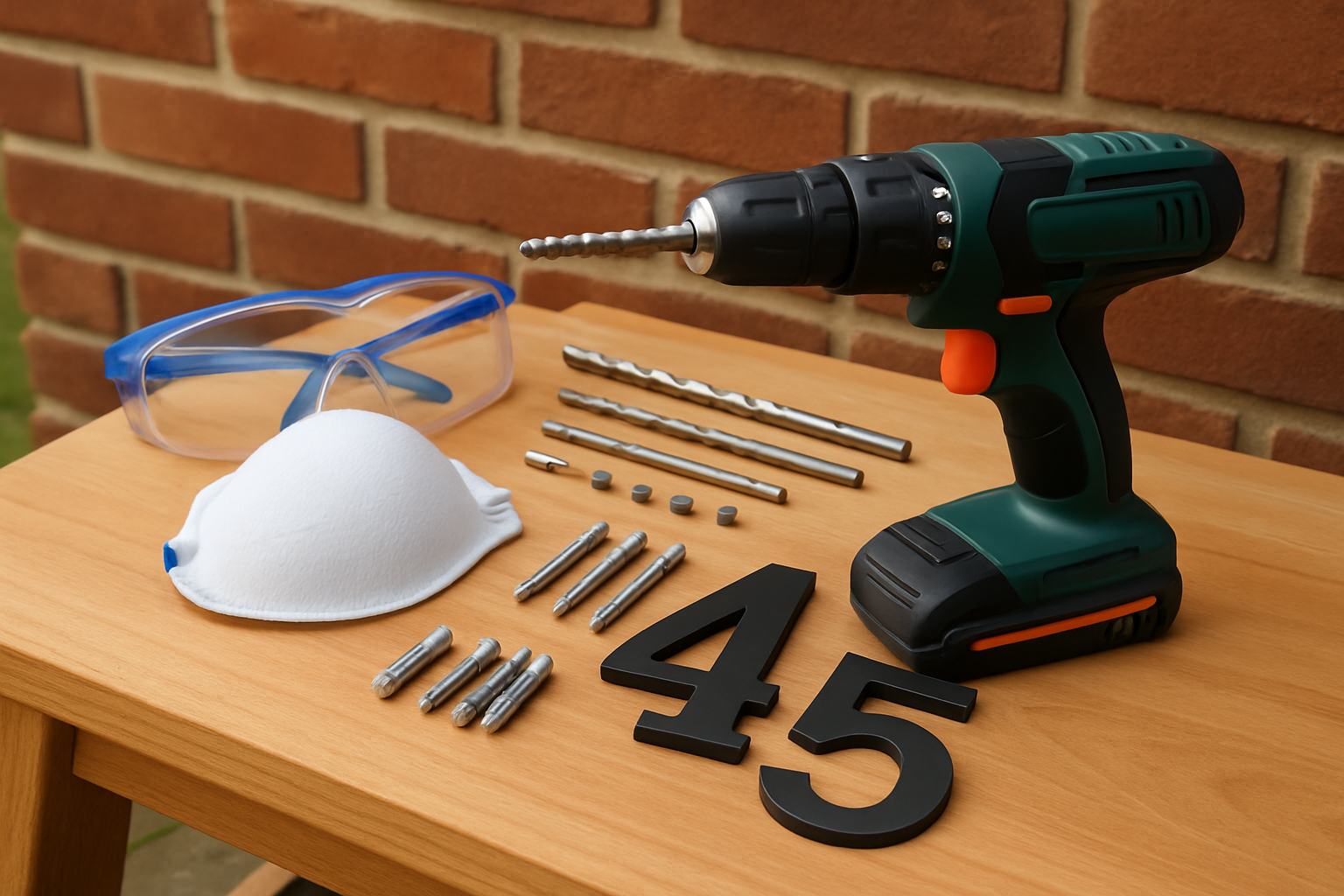Learning how to attach house numbers to brick can seriously up your home's curb appeal and make it a breeze for guests or emergency responders to find you without any hassle. Brick may be tough as nails, but it’s also a bit delicate and can crack if you’re not careful with it. A lot of homeowners wrestle with the challenge of securing their house numbers solidly without leaving their bricks worse for wear, which not only means costly repairs down the road but also a less charming look overall.
What Makes Brick Surfaces Crack and How to Get to the Bottom of It
Bricks are made from fired clay or concrete materials all snugly held together with mortar. On the outside they feel pretty tough but the brick itself can be surprisingly brittle. Those mortar joints are a bit delicate. If you go drilling or hammering without the right technique you might end up with stress fractures or cracks, especially near edges or spots where the mortar has seen better days.
- Drilling with too much force or heat can easily cause the brick to crack. I have seen this happen more times than I would like to admit
- Over-tightening screws puts too much pressure on the brick surface and turns a simple job into a disaster
- Using fasteners that aren’t built for masonry results in a weak hold and cracks nobody wants to deal with
- Bricks naturally expand and contract with the weather, making them vulnerable to damage when drilled
- Drilling too close to the edges of bricks or into older brittle ones that have lost their strength over time
Essential Tools and Materials You’ll Absolutely Want on Hand
Having the right tools and materials ready to go before you dive in really helps cut down on slip-ups and keeps the whole process humming along smoothly.
- Hammer drill: An absolute must-have for drilling into masonry with precision and it helps keep things from heating up too much—because nobody wants a tool that overheats halfway through the job
- Masonry drill bits: Designed specifically to slice through bricks and mortar like a hot knife through butter giving you clean hassle-free holes
- Plastic anchors: These little heroes create a solid base inside your drilled holes making sure screws stay put and don’t wiggle loose over time
- Screws: Team up with anchors to deliver a grip so reliable you’d trust it with your life
- Level: Your best friend for keeping lines perfectly straight—because crooked numbers are nobody’s idea of fun
- Pencil: Simple but essential, it is used to mark those spot-on drilling points so you do not miss the mark
- Tape measure: Keeps things honest by ensuring all your spacing and placement are bang on
- Protective goggles: Shield your eyes from all that sneaky dust and flying debris—your eyeballs will thank you
- Dust mask: A little something to keep your lungs happy and dust-free while you’re powering through the drilling
Step-by-Step Guide on How to Attach House Numbers to Brick Without Causing Cracks (Because Nobody Wants a Wall That Looks Like Swiss Cheese)
- Start by carefully planning exactly where you want your house numbers to sit. Grab a tape measure and double-check that they’ll be nicely centered and spaced evenly on the brick surface, so they do not look like a crooked grin.
- Use a pencil to lightly mark the drill points on the bricks. Avoid the mortar joints because those tend to be more delicate and prone to crumble.
- Fit your hammer drill with a masonry bit that’s just the right size for your anchors and screws. Getting this right will save you some headaches later.
- Drill into the brick slowly and steadily, applying gentle pressure to keep vibrations and heat under control. This extra care helps avoid those pesky cracks.
- Clean out the dust from the holes with a small brush or some compressed air since a clean hole means a snug fit.
- Push the plastic anchors firmly into the holes so the screws have something solid to grip.
- Position the house numbers over the anchors and fasten them with screws using a screwdriver or a drill set to low torque. Go easy—you don’t need to Hulk smash here.
- Use a level to check the alignment and adjust as needed before tightening the screws fully. Just be careful not to overtighten or you might stress the bricks more than your decorating budget allows.
When working with older or more delicate brick, it is definitely wise to test your drill technique on a hidden or less obvious spot first. Go easy with the pressure and drill in short bursts—this gives the brick a chance to settle in and really helps cut down on the risk of those nasty, sudden cracks that nobody wants to deal with
Other Clever Tricks to Dodge the Drill
- Use outdoor-rated adhesive mounting strips that can hold up your house numbers without drilling into the brick. It’s a neat trick that saves time and a headache.
- Go for construction adhesive made for masonry to make sure those numbers stay put no matter what the weather throws at them.
- Try mounting your house numbers on a metal or wooden plaque first then fix that plaque to the brick. This looks sharp and keeps the brick from taking a direct beating.
- For an easy-on easy-off option consider magnetic numbers on metal surfaces or metal plaques attached to your brick wall. It’s a clever way to limit damage while keeping things flexible.
Alternative methods avoid the dreaded cracking issue but their durability and looks can vary. Adhesives tend to lose their grip over time due to weather, while plaques offer a balance of protection and style but require more effort during installation.
Frequent Mistakes to Watch Out For When Mounting House Numbers on Brick (and How to Dodge Them Like a Pro)
- Drilling too close to the edges of bricks or mortar joints almost always causes cracks so it is like walking a tightrope
- Ignoring the condition of the brick wall when the bricks are old or fragile is a recipe for trouble
- Picking the wrong drill bit size can backfire badly either making holes too big or turning anchor points into weak spots
- Skipping plastic anchors often leads to loose or wobbly results
- Over-tightening screws puts unnecessary stress on the bricks and bricks don’t appreciate a heavy hand
- Neglecting to wear protective gear invites dust and potential injuries and nobody wants that
"Patience and picking the right tools are absolutely the backbone of any masonry job. Rushing through things or trying to take shortcuts when fastening stuff onto brick often backfires, usually leading to cracks—trust me, I have seen it more times than I care to count. It’s really worth taking your time and going with good quality plastic anchors paired with a hammer drill that’s up to the task, just to keep those bricks happy and intact." – John Stevens, Professional Mason
Tips for Maintaining Your House Numbers and Keeping Cracks from Sneaking into Your Brick
Staying on top of routine maintenance is the final step in learning how to attach house numbers to brick, giving your mounted numbers some extra staying power and keeping that wall looking sharp. By checking in regularly, you’ll spot those little issues before they snowball and ensure the attachment stays tight and crack-free.
- Give anchors and screws a once-over every year to catch any early signs of loosening before they become a bigger headache
- Carefully wipe down house numbers and the nearby brick with mild soap and water, just the gentle touch they deserve
- Avoid harsh chemicals or abrasive cleaners because they can damage your bricks and numbers
- Make sure water isn’t lingering or pooling around the area as that leads to brick wear you don’t want
- If your brick surface has been sealed, don’t forget to reapply that masonry sealant since it’s your best bet at keeping moisture at bay and those bricks happy






